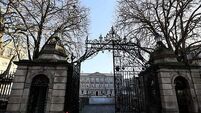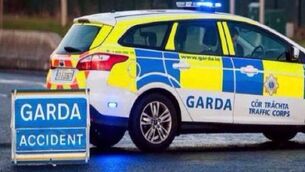Who will lead into inquiry into Ireland’s banking crisis?

Some have already suggested it will throw up nothing new about why and how the State guaranteed over €450bn in deposits and debt one long night several years ago in 2008.
Others say it is an important narrative that needs to be set out and that the public want open hearings.
There is also the claim that any probe could just turn into a witch hunt against the last administration and effectively blacken Fianna Fáil, already punished in the last general election, for generations to come.
The Oireachtas Public Accounts Committee (PAC) report, as revealed today by the Irish Examiner, is another addition to the findings on the banking crisis already produced in the Nyberg, Honohan, and Wright reports.
It uses information gleaned from public hearings with senior civil servants, those in charge of oversight of the finance sectors, and details obtained from documents leading up to, around, and after the guarantee of 2008, and up until the present day.
Throughout the PAC report, a lot of blame is laid with senior civil servants in the Department of Finance and the lack of vigilance by Patrick Neary, the then financial regulator, as well as the erroneous — to put it mildly — statements given by bank chiefs prior to the guarantee.
Anglo made a formal presentation to department officials on Sept 18, some 11 days before the guarantee, showing the bank’s business model in “a very positive light”, claiming it continued to be “highly profitable”.
But the PAC concludes: “... either senior Anglo executives were deluded or they reckoned they could get away with presenting what they must have known was data that could at best be described as inaccurate.”
Crucially, the PAC finds that when it came to the crunch and bankers were knocking on government doors on the night and morning of Sept 29/30, 2008, nearly begging for a bailout, there seems to be a vacuum of information about the talks.
“That meeting is shrouded in a degree of mystery and there appears to be no written proposal brought by these senior banking executives. What we do know of course is that, some hours later, the blanket guarantee was agreed,” it says.
From the documents and evidence provided to the PAC, it concludes that the department failed because of a lack of qualified staff, an unchallenging culture, and its lack of focus on systematic risks. The department was “not fit for purpose” and was “out of its depth”, the report states.
It has since increased staff numbers, set up the fiscal advisory council, and is now more open to greater interaction with the private sector, the report adds.
Crucially, the report also looks to the future of Irish banking and makes radical legislative proposals to beef up Irish laws on white collar crime.
This includes introducing laws that would ban directors of failed banks or failed sections of banks from working in institutions, as well as heavy fines for bankers. It bases this model partially on similar laws enacted in the UK. This was highlighted by Mathew Elderfield, the financial regulator, in his evidence to the PAC in June.
The move would involve introducing a legal code on presumptive liability or presumptive sanctions for bank directors. There is no law on reckless trading as in other jurisdictions, it is pointed out.
Neary, the former regulator, does not escape criticism. PAC finds that the main shortcomings of his office were “weak rules, poor resources, and the wrong attitude”.
So, are we any the wiser about the banking crisis and, in particular, the stabilisation of our banks with this latest dossier of shame on Ireland’s financial affairs?
It is spelt out, as we know, that the tens of billions of euro fronted for the banks will count against future generations. Immediate concerns are also raised about the use of €20bn in national pension funds for the recapitalisation of banks. There is a possibility the banks will not be able to return the money and the State will then be left facing a bigger difficulty in addressing pension needs after 2025, the PAC advises.
It remains to be seen if the promised Oireachtas banking inquiry will shed more light on our banking crisis and uncover who knew what and when in the days and weeks leading up to the guarantee. The PAC’s recommendations, particularly on strengthening enforcement in the sector, should be taken seriously if future banking dangers are to be avoided.
* Oct 2008: “Irish banks are so well capitalised compared to any bank anywhere across Europe that I am confident they can absorb any loan or any impairment that emerges in the ordinary course of business over the foreseeable future.” — Ex-financial regulator Patrick Neary
* May 2009: The guarantee was so big it equated to 261% of GDP, higher than any other EU country. At the date of the guarantee, Ireland’s credit rating was AAA. Moody’s then cut it five times reducing it to junk.
* Oct 2010: Department of Finance secretary general Kevin Cardiff admits, in retrospect, that it would have been better in late 2008 if “a full and detailed inspection had been carried out on each institution”.
* Jun 2013: “The lessons of the financial crisis are clear-supervision and regulation were too light touch.”
— Financial regulator Matthew Elderfield
* Oct 2013: Net investment by the state in the banks is €63bn. This could rise further depending on any losses from dealing with distressed mortgages or from costs associated with liquidating IBRC, formerly Anglo.
* Oct 2013: PAC: “The main problems with the bank bailout was that the money put into Anglo and Irish Nationwide is already written off and it will be for future generations to meet the costs of actions of those banks. In the case of investments in the other banks, any returns are contingent on those returning to profitability and therefore the short term returns are unlikely to be material”.
* Oct 2013: The predictions for Nama, which took over bad loans from the banks, is that it will break even and that there will be no surplus available to the state at 2020, when it is stood down. It paid €31.8bn to acquire 12,000 loans in 800 debtor groups. The actual face value of these was €74bn, representing an average 57% haircut.
* Nov 2010: Nama was critical of information made available to back up loans given to a small group of developers. Bank lending was characterised as “poor credit appraisal and evaluation and in some cases, sloppy documentation and security”.
* PAC: “While individual blame is not being attached any one official, the department was out of its depth and did not have the ability to challenge the information it was being presented with in relation to the emerging situation in the banks and that is where the senior civil servants, who were the executive, of the department fell down.”












